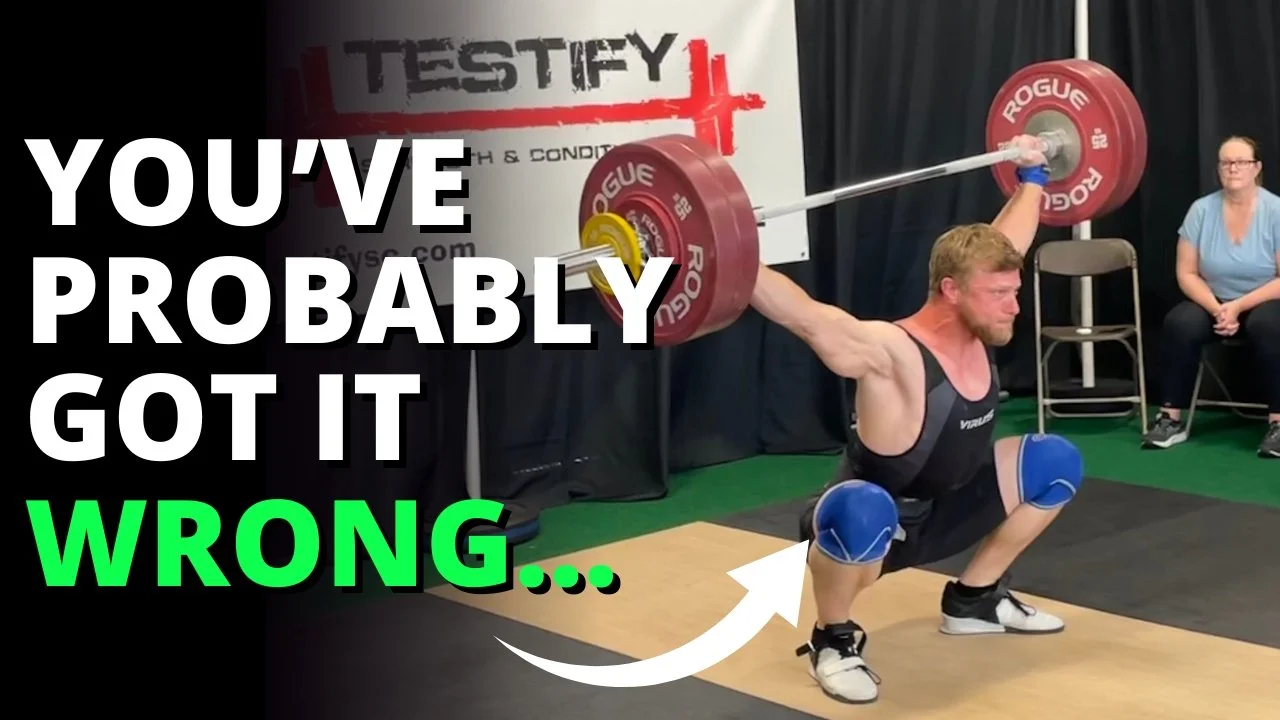Snatch vs Power Snatch vs Hang Snatch - What's the Difference?!
/Snatch, hang snatch, power snatch, hang power snatch - what are the differences between these lifts, and how can we remember these differences in an easy and practical manner? To sort this out, we first need to understand two words - hang and power.
HANG
Hang refers to a starting position, so if you see the word hang, then you know the lift starts with the bar hanging in your hands. Common hang positions include the mid-thigh, low thigh, above the knee, below the knee, and even mid-shin, but most often (without any other specific qualifiers), hang typically refers to a start position at the mid to low thigh.
Finally, note that if you don’t see the word hang, then you know the lift starts with the bar resting on the floor.
POWER
Power refers to a landing position (AKA receiving position), i.e., the position in which you catch or rack the bar. When you see the word power, simply think partial squat (tip: power and partial both start with the letter “p”). Thus, if you see the word power, you’re going to receive the snatch in a partial depth overhead squat. If you don’t see the word power, then you know you’re going to receive the snatch in a full depth overhead squat.
Now that you’ve got those two terms down, it’s time for the actual lifts . .
SNATCH (AKA squat snatch or full snatch)
Since you don’t see the word hang, the bar starts on the floor, and since you don’t see the word power, it’s not received in a partial squat and is therefore received in a full depth overhead squat before being stood up.
In summary, the snatch starts with the bar on the floor, the bar is accelerated upward, it is received in a full depth overhead squat, and then the lifter recovers (i.e., stands up).
POWER SNATCH
You don’t see the word hang, so the bar starts on the floor, but you do see the word power, so the bar is received in a partial depth overhead squat.
In summary, the power snatch starts with the bar on the floor, the bar is accelerated upward, it is received in a partial depth overhead squat, and then the lifter recovers.
HANG SNATCH
You see the word hang, so the bar starts hanging in the lifter’s hands, but you don’t see the word power, so the bar is received in a full depth overhead squat.
In summary, the hang snatch starts with the bar hanging in the hands, the bar is accelerated upward, it is received in a full depth overhead squat, and then the lifter recovers.
HANG POWER SNATCH
Not surprisingly, this is a combination of both the hang snatch and the power snatch - the love child of both of those lifts. You see the word hang, so the bar starts hanging in the lifter’s hands, and you also see the word power, so the bar is received in a partial depth overhead squat.
In summary, the hang power snatch starts with the bar hanging in the hands, the bar is accelerated upward, it is received in a partial depth overhead squat, and then the lifter recovers.
By knowing what hang and power mean - and knowing what it means when those words aren’t present - you’ll be able to consistently figure out these variations of the snatch. As always, we hope this helps you get stronger and live better.
-Phil
PS: Whenever you want even more Testify in your life, here are some free resources:
Book a free intro and strategy session with us HERE.
Pick up a free copy of Testify’s Squat Guide: 12 Tips to Improve Your Squat Now HERE.
Get our free weekly email - containing useful videos, articles, and training tips - HERE.
Follow Testify on Instagram HERE.
Subscribe to Testify’s YouTube channel HERE.
(Some links may be affiliate links. As an Amazon Associate, Testify earns from qualifying purchases.)
